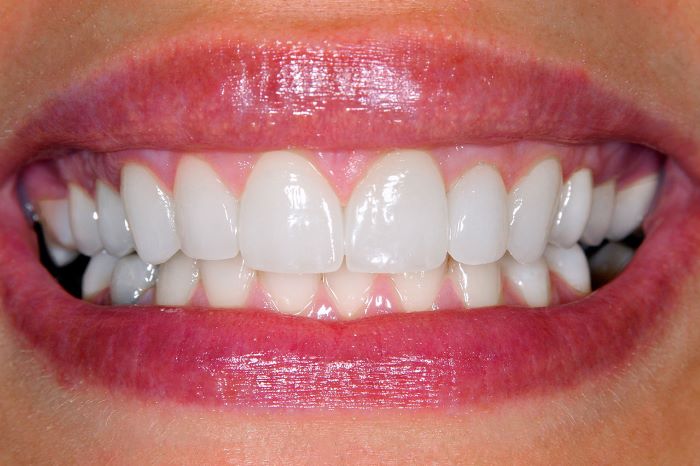Transform Your Smile: A Complete Guide to Cosmetic Dentistry
A nice smile can leave a lasting impression, but a lot of people feel bad or self-conscious about the flaws in their smile. These problems aren't just about how you look; they can also hurt your self-esteem, how you talk to other people, and even your oral health. For instance, teeth that are discolored, chipped, have gaps, or are not in the right place. Cosmetic dentistry has come a long way in the last ten years. Patients can now get solutions that are complicated, last a long time, and look natural that make them look and feel better.
Modern cosmetic dentistry is based on clinical science, digital precision, and **biomimetic materials**. It's not just about making things look better anymore; it often includes care that restores and prevents problems as well. A holistic approach to these problems helps both health and self-esteem by restoring balance to a patient's smile and bite while keeping the biological structures that support them intact.
Getting To The Bottom of Things
Aesthetic dental problems almost never happen on their own. Staining from outside sources, like coffee, wine, or tobacco, or changes in the dentin over time can both cause discoloration. Bruxism and **acid erosion** are two things that can wear down or break enamel. Not only do malalignment and crowding make things look bad, but they also make it harder to get rid of plaque, which raises the risk of gum disease.
When you lose teeth, it can cause more serious problems, like changes in your bite and the gradual loss of the bone underneath them. If these issues aren't fixed, they could get worse. Cosmetic procedures that seem like they aren't necessary can help restore balance, protect the structure of the mouth, and keep disease from coming back.
Aesthetic Treatment With a Clinical Objective
There are many different kinds of cosmetic dentistry, from simple enamel contouring to full-mouth reconstructions that are more complicated. Each solution is made just for that person, taking into account how long it will last and how it will look.
Professional whitening is still one of the most popular services. Bleaching systems that work in the office use small amounts of hydrogen peroxide or **carbamide peroxide** that are carefully controlled. This makes teeth whiter without hurting the enamel. This is not the same as kits you can buy at the store. The procedure usually takes less than an hour, and the results can last for years if you take care of them.
Porcelain veneers can fix a lot of problems, like shapes that aren't even, enamel defects, and slight misalignment. These very thin ceramic shells are glued to the tooth's surface with very little preparation. They keep most of the natural enamel. Lithium disilicate, a very strong glass ceramic, is one of the things that makes the product look and feel so real.
Invisalign® and other clear aligner treatments use a set of custom-made trays to fix issues with spacing, crowding, and bite. Aligners are better for your gums than regular braces because they are less noticeable, can be taken off, and are easier to keep clean while you are wearing them.
People who are missing one or more teeth can get dental implants, which are a **biomimetic** way to replace them. Implants are made of biocompatible **titanium** or zirconia and attach directly to the **jawbone**. This makes a stable base for crowns or prostheses. When put in the right way, they hold the bone structure in place. This is not true for bridgework or removable dentures, which can move.
Modern Precision and Material Integrity
For cosmetic procedures, the doctor's skill is important, but so is the quality of the materials and the accuracy of the workflow. Today's porcelain systems are made to be both strong and good-looking. Lithium disilicate and advanced **zirconia ceramics** are both strong and look like real enamel. Digital shade matching makes it very consistent and takes away any subjectivity.
Some of the new technologies that make it possible to make crowns and veneers on the same day are digital intraoral scanning, **computer-aided design** (CAD/CAM), and **3D milling**. These changes fix the problems that are common with traditional impressions and make the fit and strength much better. These methods do a lot more than just make the teeth look better; they also keep the natural tooth and the structures around it safe.
Realistic Benefits and Careful Planning
Patients often say that their looks and self-esteem have improved a lot. Getting a new smile can boost your confidence and how people see you at work. Cosmetic dentistry can also make your teeth cleaner, help you speak better, and help you chew better, in addition to making them look better.
But a good evaluation has to come first. Not all treatments work for all patients. For example, you need to take care of gum disease before you can use veneers or whitening. People who grind their teeth at night may also need **night guards** to protect their ceramic restorations from damage. The bones and soft tissues must be healthy for an implant to work, and people should have realistic expectations from the start.
There isn't just one type of high-quality cosmetic dentistry that works for everyone. It is a precise field that requires a careful diagnosis, careful technique, and a long-term relationship between the patient and the provider.
Keeping the Results Over Time
Getting a nice smile is only the first step. Taking care of things is very important for staying healthy and living a long time. Daily oral care must be thorough yet gentle—using **soft-bristle brushes**, **stannous fluoride** toothpaste, and regular **flossing** to protect margins and reduce inflammation.
Regular cleanings and checkups by a dentist can help catch small problems before they get worse. For people who have crowns or veneers, recall visits let the dentist check the edges and the wear and tear on the enamel. Your choices about how you live also matter. For instance, avoiding things that can stain teeth, like red wine or tobacco, can help whitening and ceramic restorations last longer.
Restorations may need to be fixed or replaced after a while. It's not because they broke; it's because the tissues around them or the way the bite works naturally change. On the other hand, a well-made cosmetic case can last for more than ten years with little help, especially if it is cleaned and cared for often.
In Conclusion
Cosmetic dentistry merges the precision of modern dental science with the artistry of smile design. Whether addressing simple discoloration or rebuilding an entire arch, the goal remains the same: to restore balance, preserve health, and elevate the beauty inherent in each patient’s smile.
The finest cosmetic outcomes are those rooted in biological respect, material integrity, and personalized planning. By approaching treatment with both aesthetic vision and clinical rigor, patients achieve results that are not only beautiful—but enduring.
For a comprehensive consultation tailored to your goals and clinical needs, call (407) 777-2071 and speak with our expert team today.

